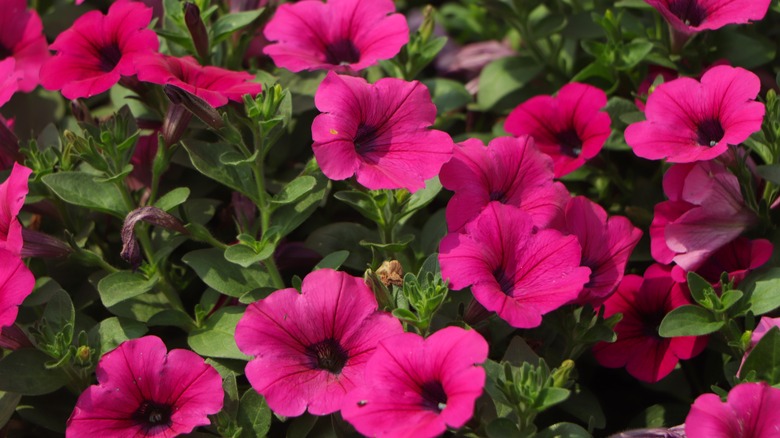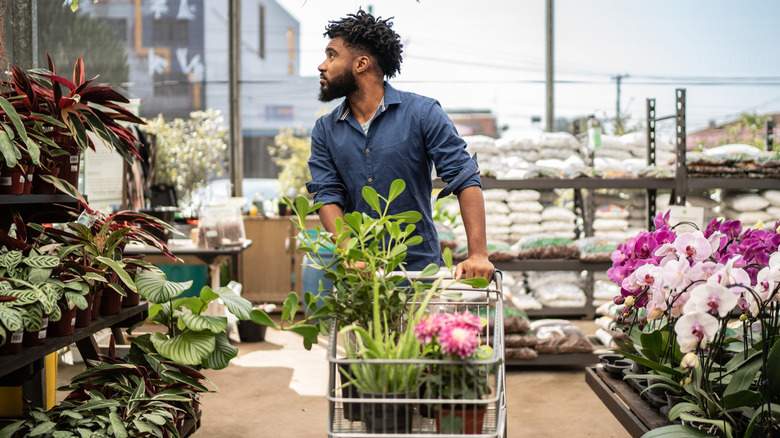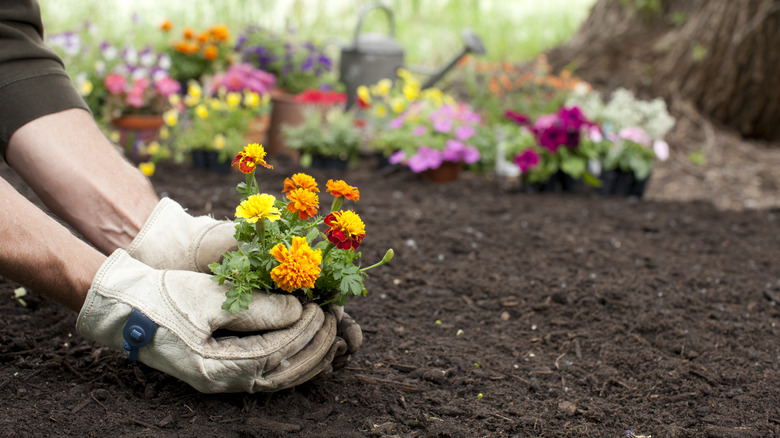Is August Too Late To Plant Flowering Annuals?
Annuals can be tricky. For those new to the gardening game, annuals are a flowering plant that blooms once a year – hence the name. Annuals include some of the most beautiful flowers a garden boasts: begonias, petunias, and marigolds, among others. Because they only bloom once a year, though, you have to plan your planting and gardening perfectly if you're going to take advantage of that short and beautiful window. Contrary to popular belief, you can plant annuals throughout the summer as they tend to bloom from May to early fall.
Annuals are complicated little flowers because they don't necessarily regrow on their own. If they bloom properly and your soil is healthy, they may leave seeds that will grow again in a year. Still, that may not be the case — you may be using planters or less-than-perfect soil — meaning you have to replant every year, which is why timing is so important. The best time to plant annual seeds is in the spring, when the soil is moist, and they have enough time to mature before the summer. Still, if you didn't get around to planting early, there is more than one way to make the most out of the annual season in the late summer.
Don't worry; it's not too tricky. Below we break down everything you need to know about planting your annuals late in the season. Yes, even as late as August.
Make the most of your time
Only some people get around to planting their annuals in time. If that sounds like you, you've got a couple of options come August. First and foremost, forget to plant your seeds if you want to enjoy the annuals this year. The best move is to hit the plant store or the Home Depot in search of some already in bloom. The good news is that they will probably be on sale this late in the season.
Remember that by August, not every annual will be looking its best. Some annuals flower first and wilt early, while others will begin to lose their luster in the dog day heat. To combat these complications, you'll want to focus on those that do best in very hot and sunny weather. Plants like the African marigold, clary sage, and a host of others will stay bright and beautiful in the August sun until the leaves begin to change.
Here's the good news about annuals: while it's definitely annoying that they won't necessarily rebloom on their own next season, they can survive in virtually any container or be transferred to the soil at any point without their bloom being affected. Typically flowers like petunias, which are small, brightly colored, and relatively delicate, do great in window boxes or hanging potters. In contrast, taller buds like celosia should be reserved for a garden setting.
Plan ahead for next year
The easiest way to get the most bang for your buck from your late-in-summer annual purchase is to invest in plants that more easily regenerate than others. While annuals have a reputation for being finicky breeders, if you research, you should be able to curate some organic growth next year. Alyssum, for example, is a great choice for a replicating annual if you live somewhere dry and arid, as it is known to thrive in rocky environments. To make the most of reseeding annuals, you need to know your USDA Hardiness zone, which ranges from 1 to 11 and varies depending on climate and soil. Some will fair better in low zones, while others hit their best bloom closer to 10 or 11.
Be warned, though; reseeding annuals are nothing like other flowers. Compared to perennials, gardeners have virtually no control over where the annual reseeds, meaning you might not end up with annuals in your plot, or you may end up with way too many somewhere you don't want them. On the other hand, self-seeding annuals are less work and are highly attractive to pollinators, enhancing your yard's overall health. Ultimately it is up to you which seeding annuals to plant, but either way, count on some surprises — good and bad! — because this flora can be highly unpredictable.


